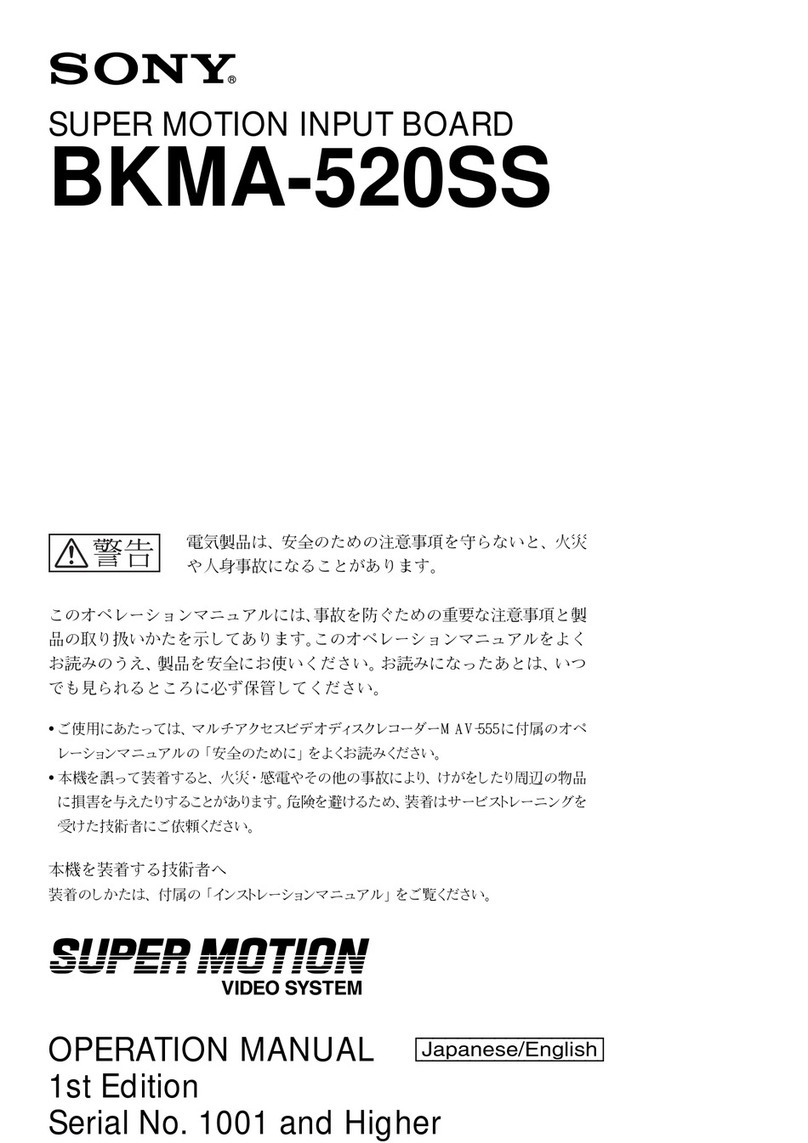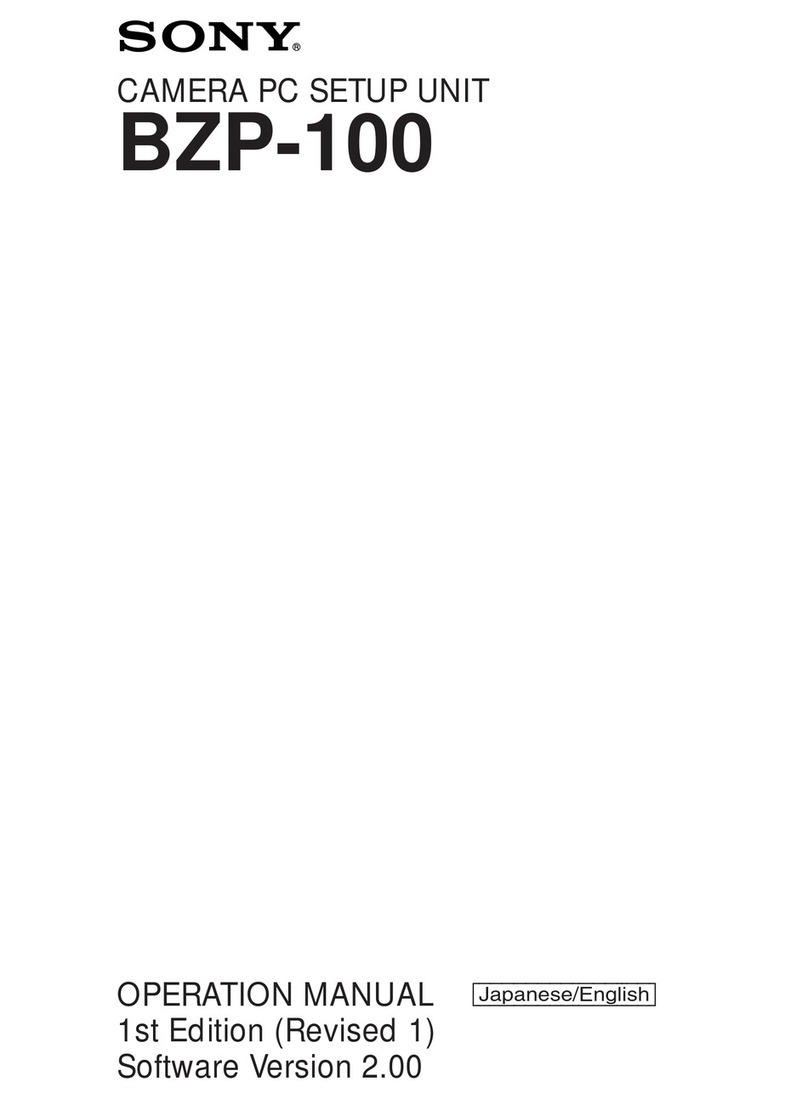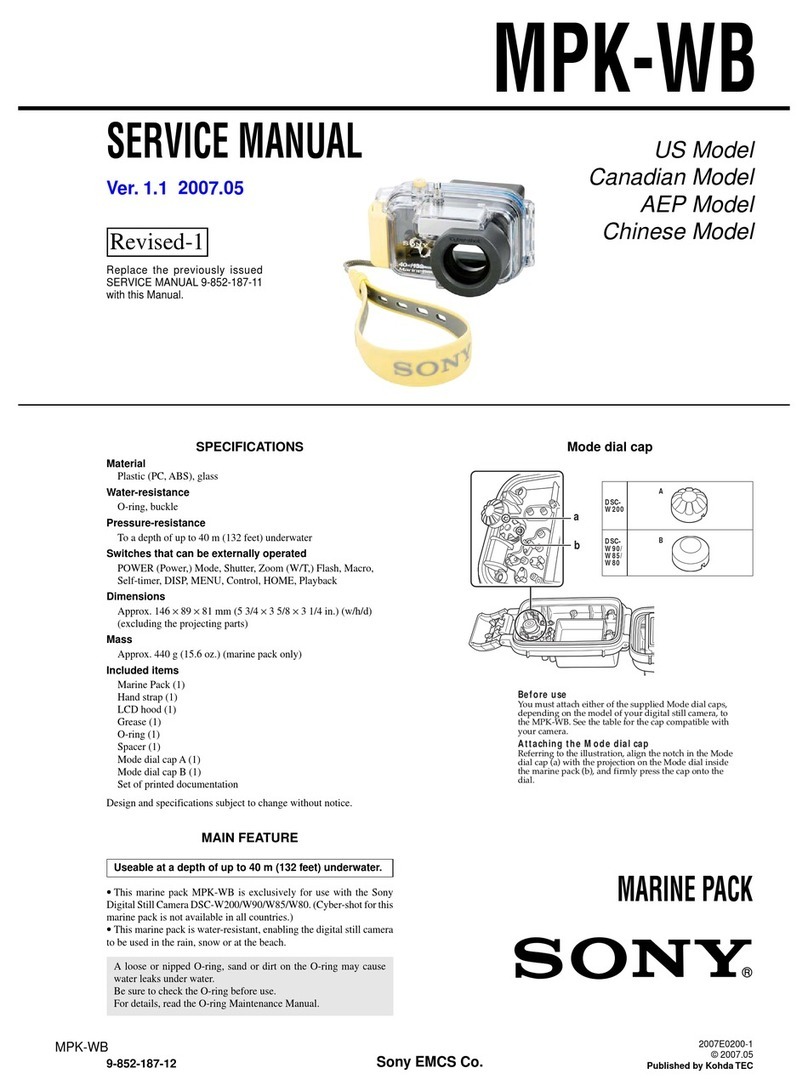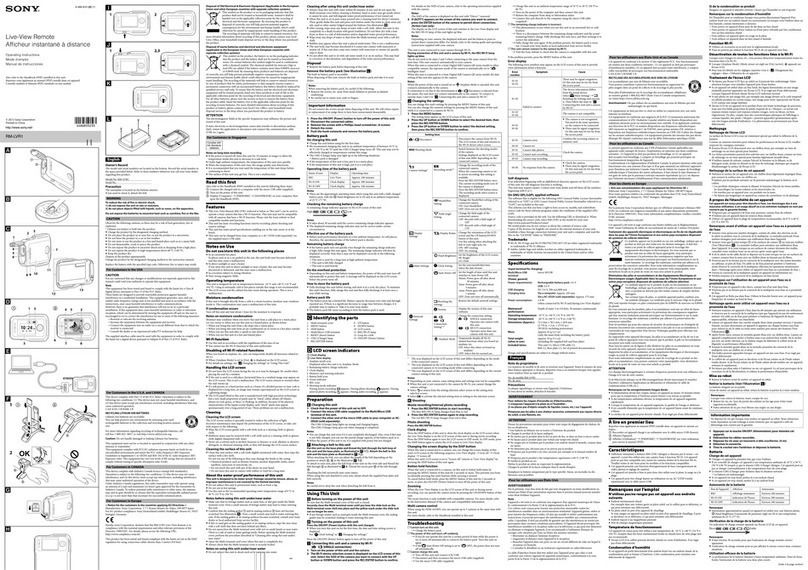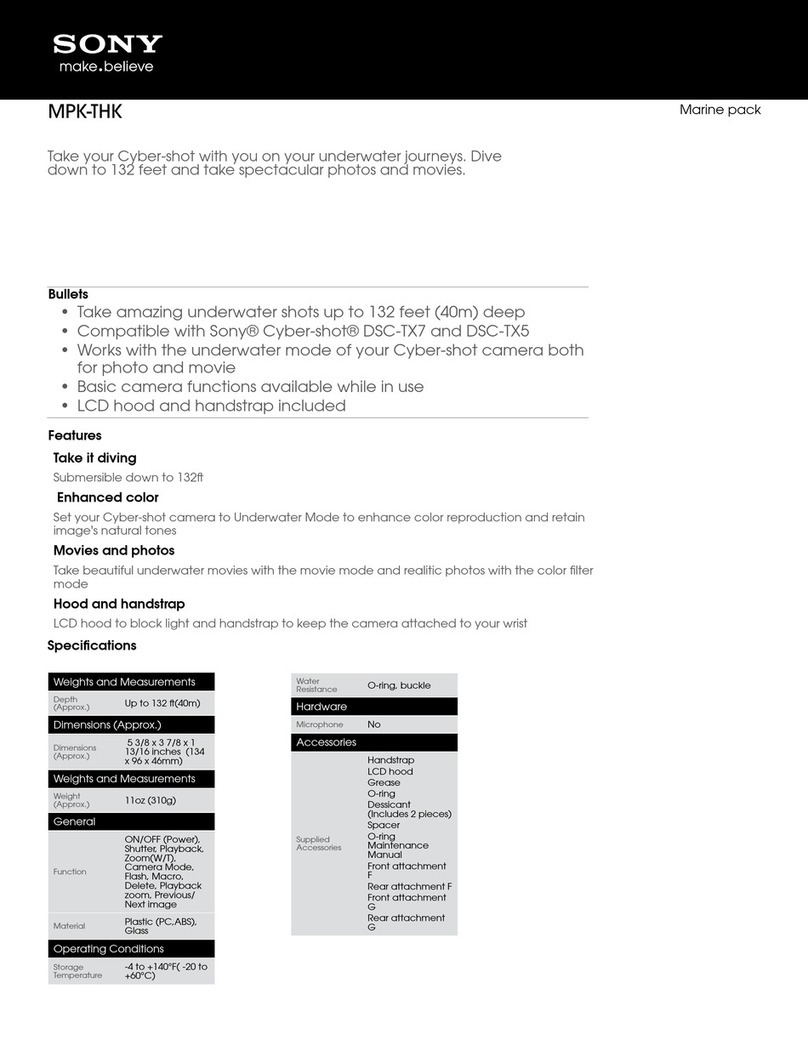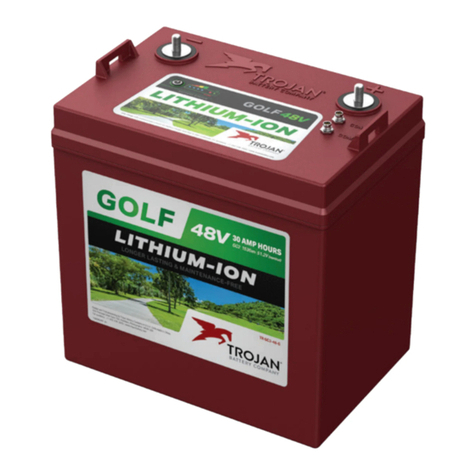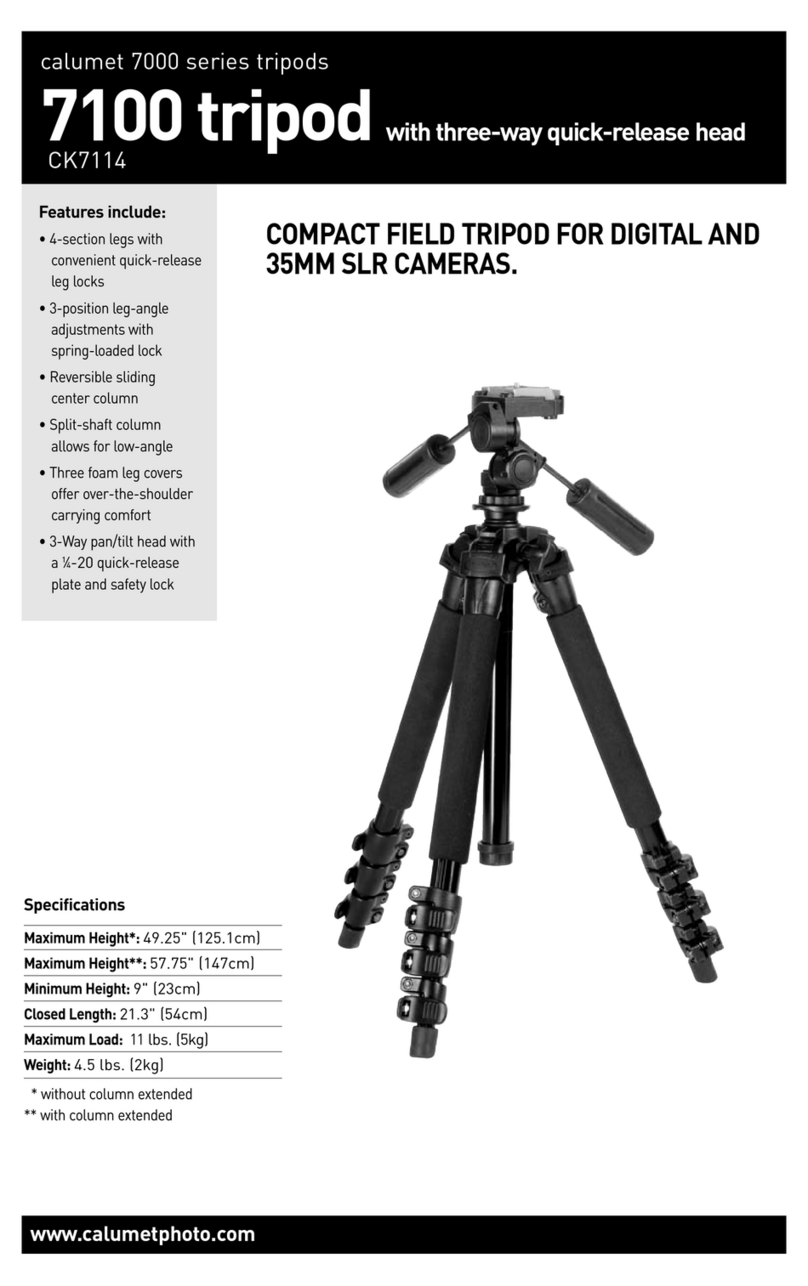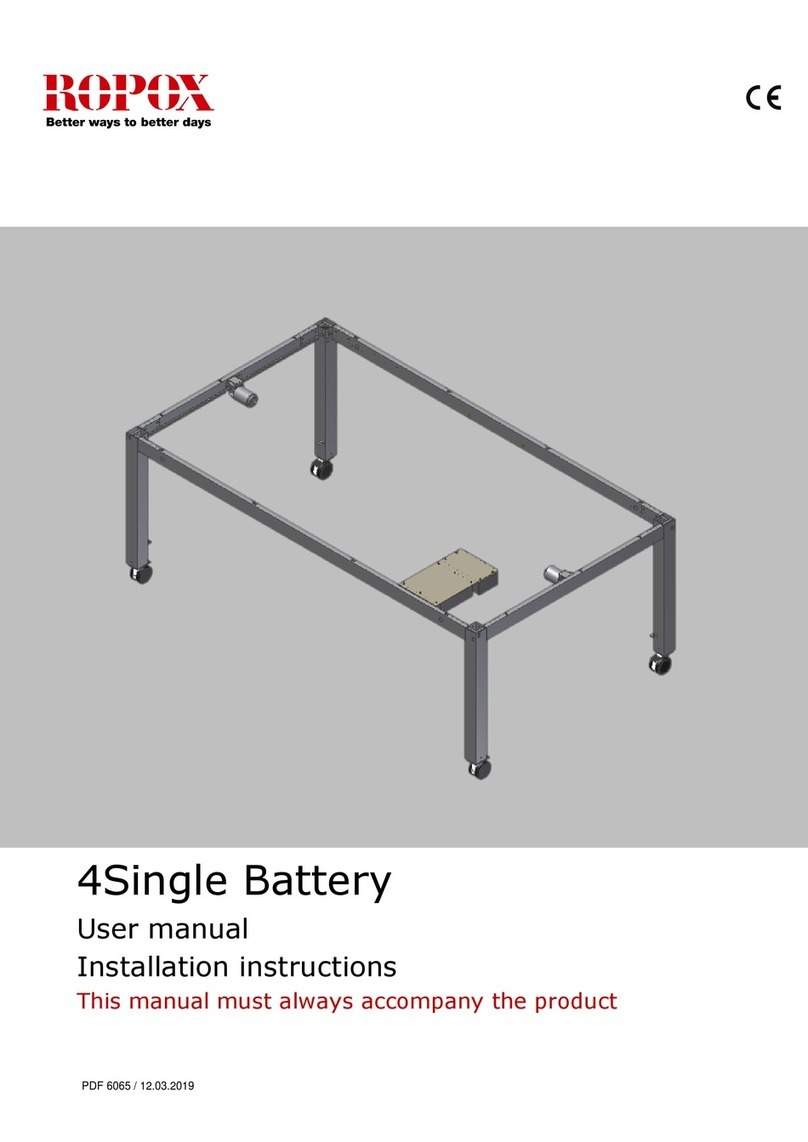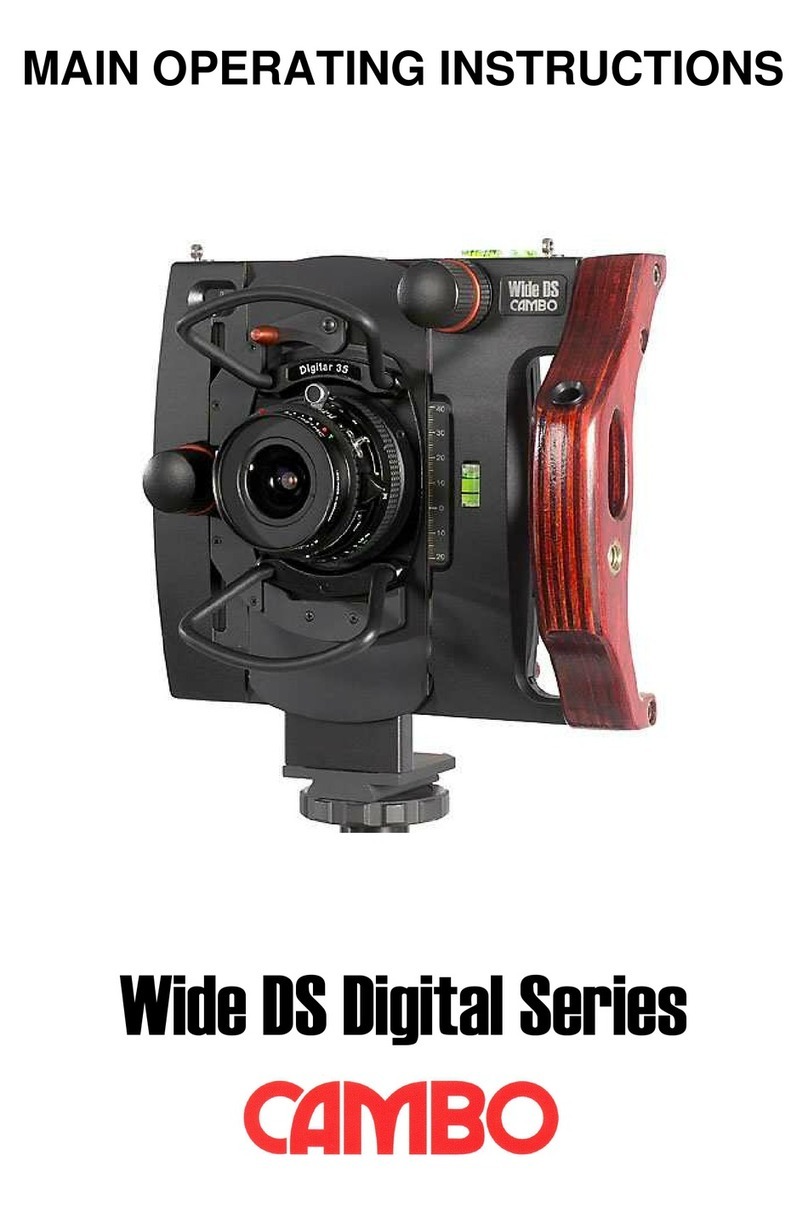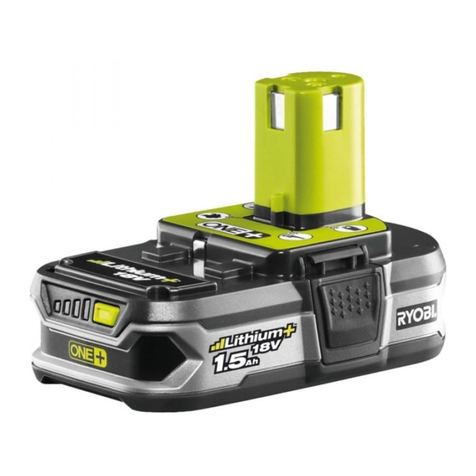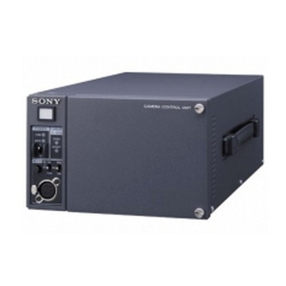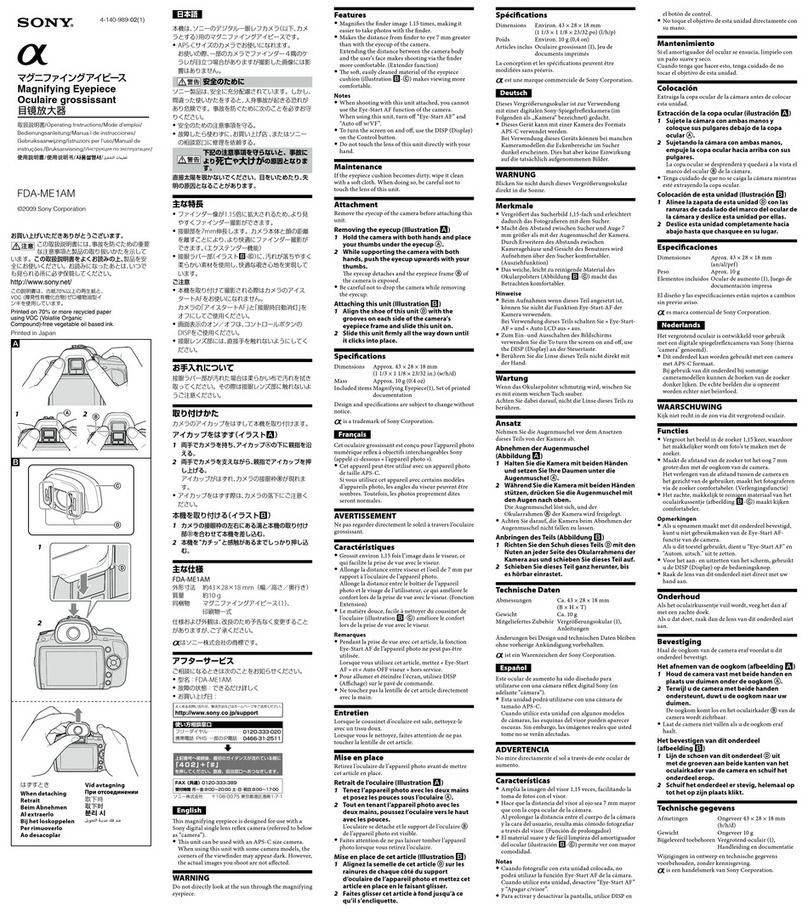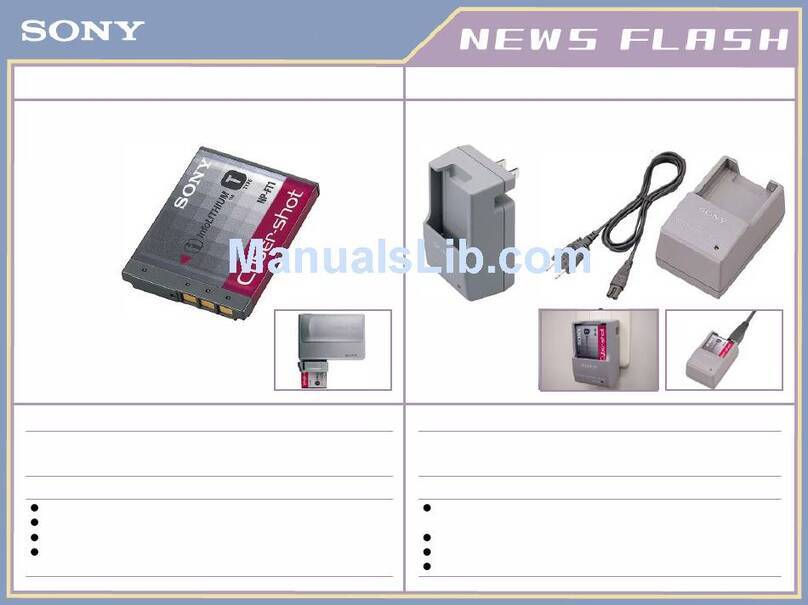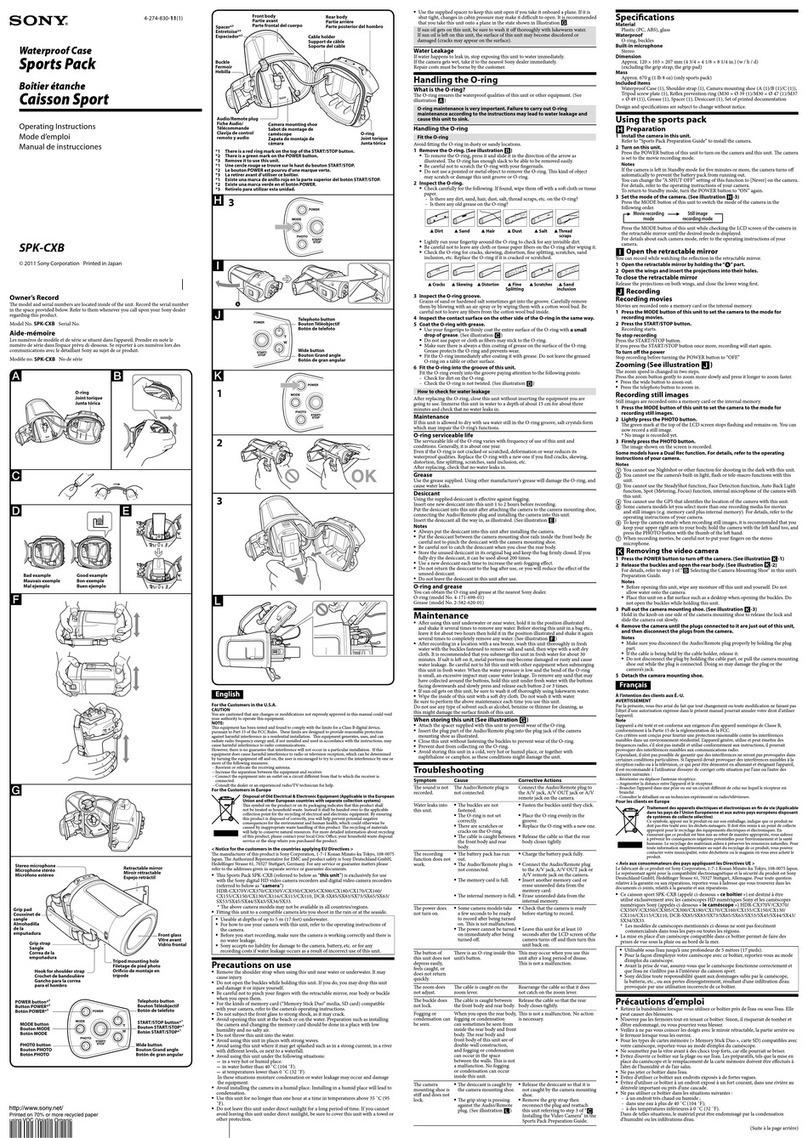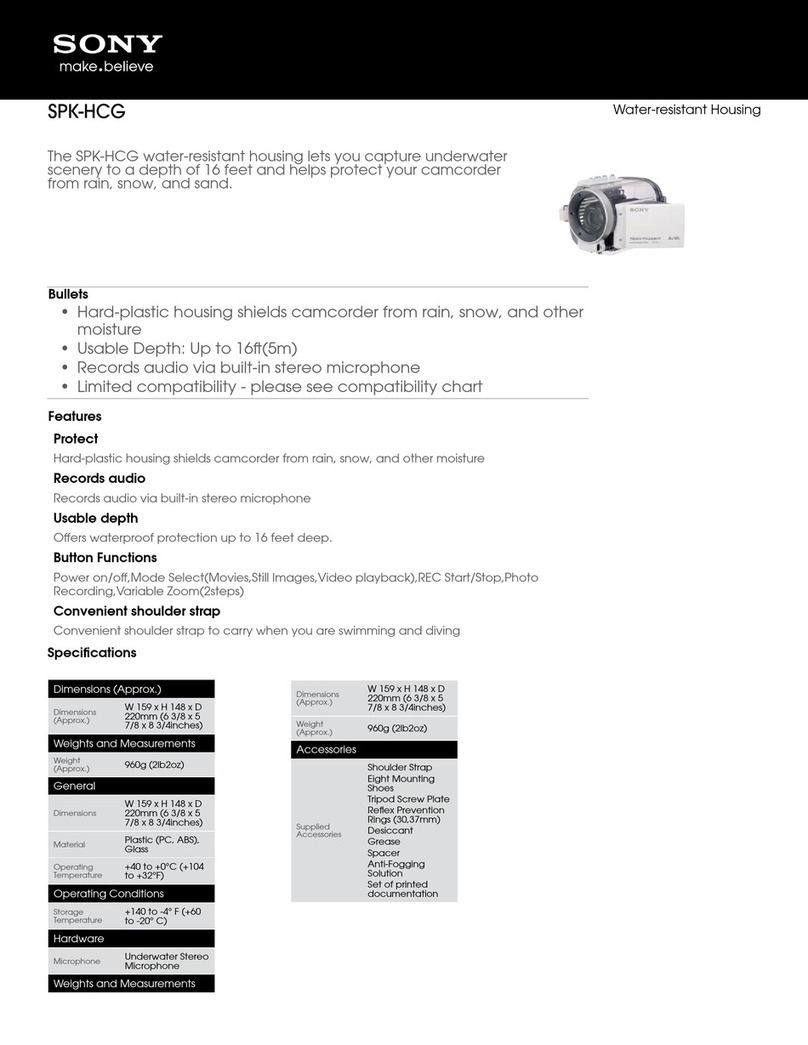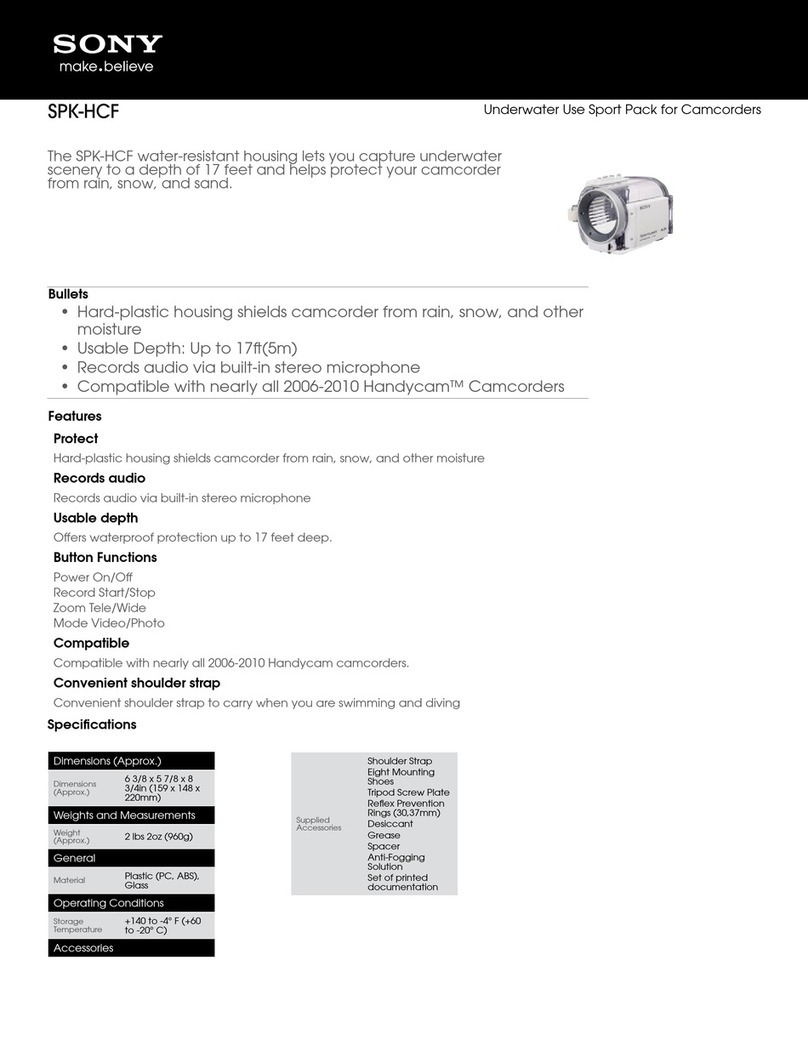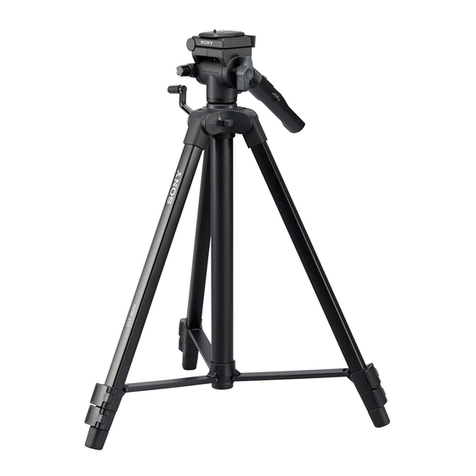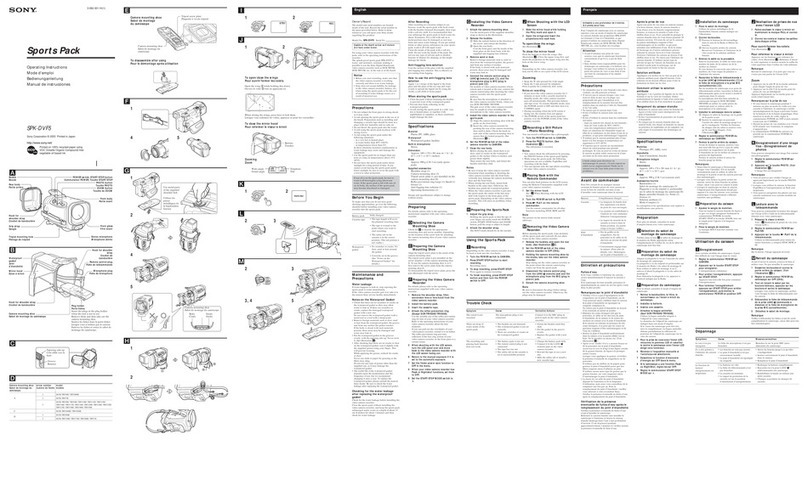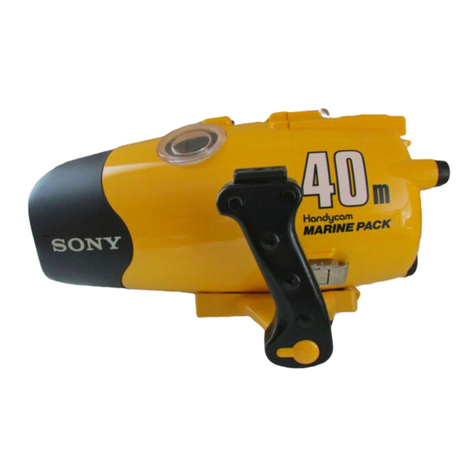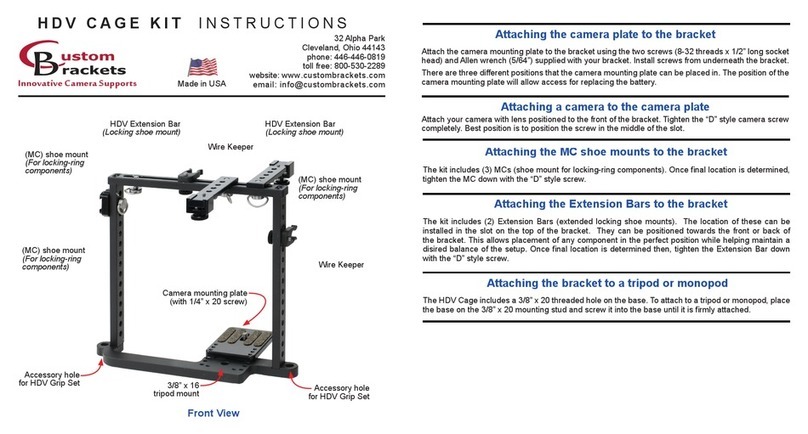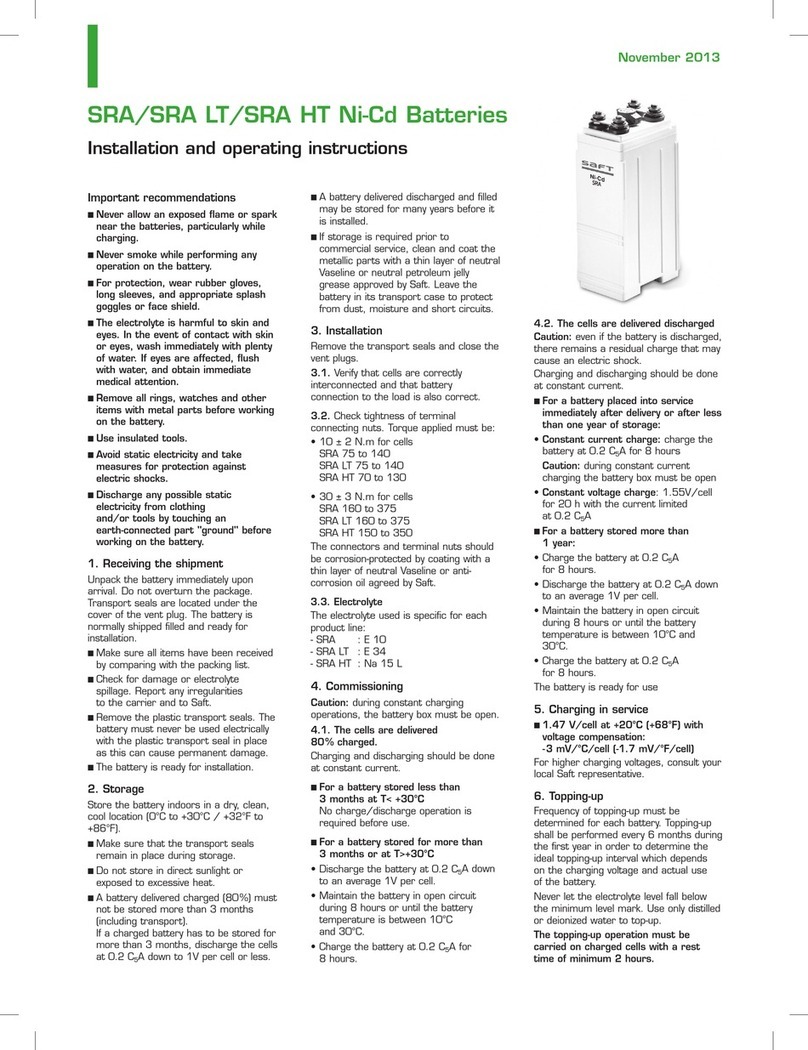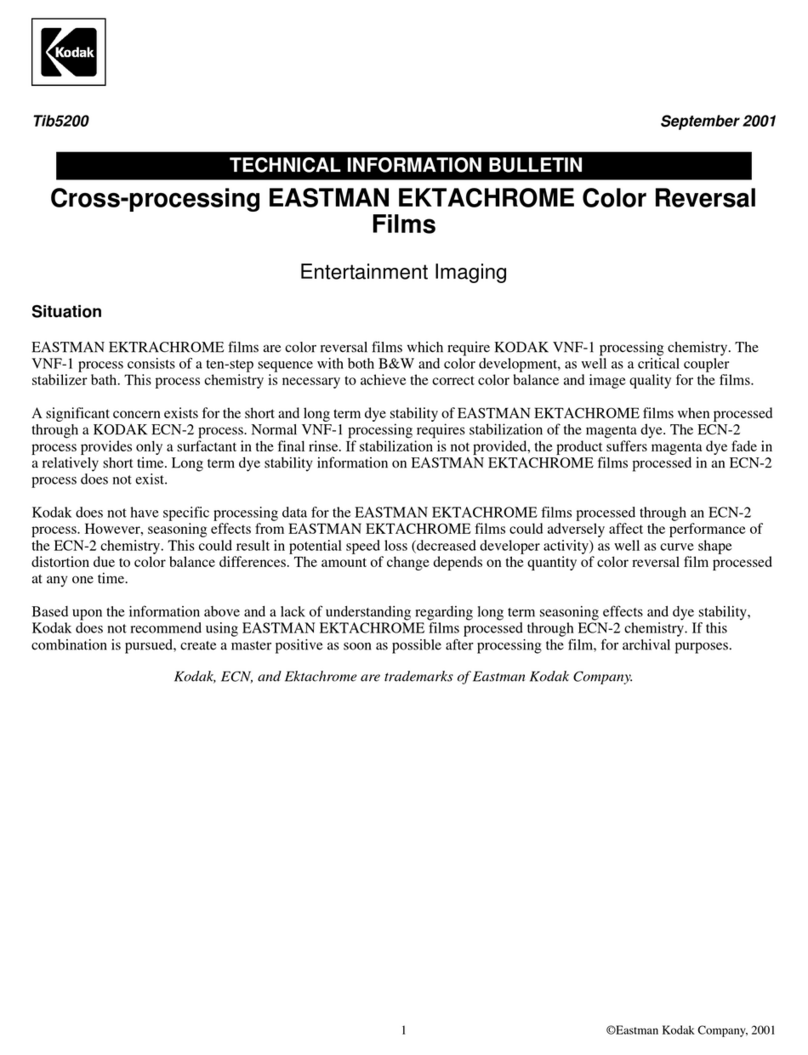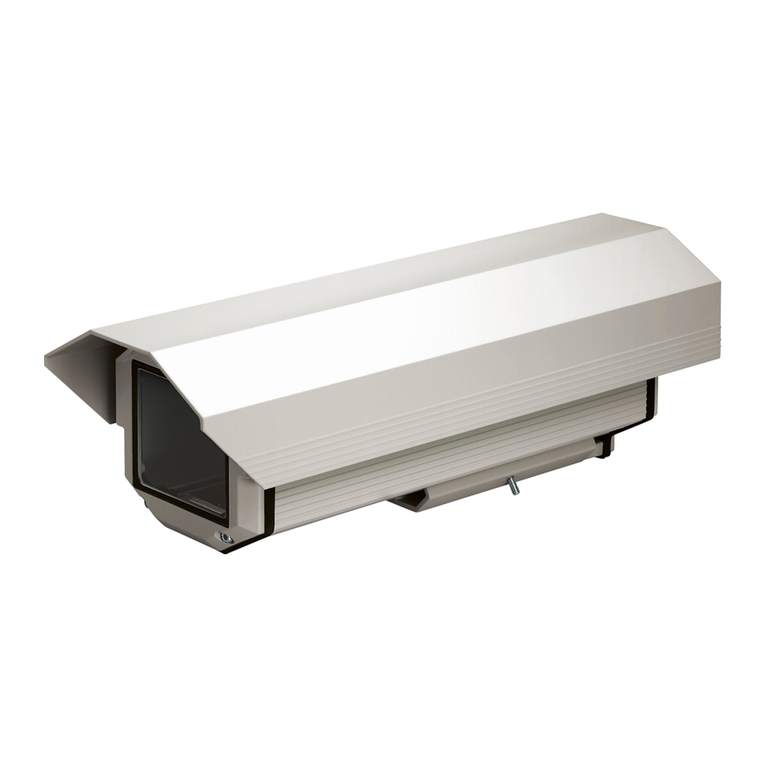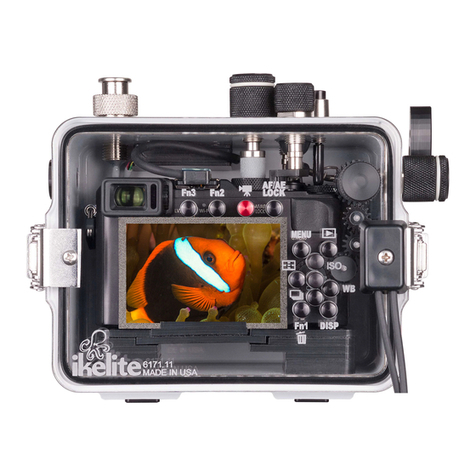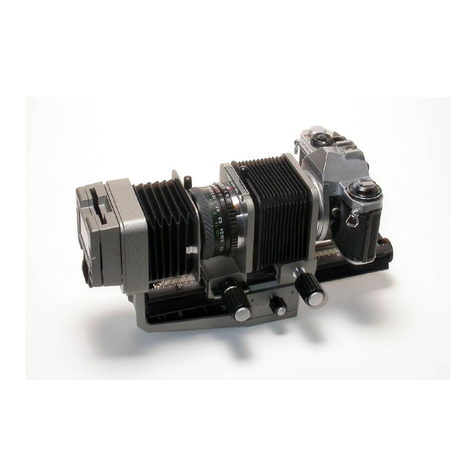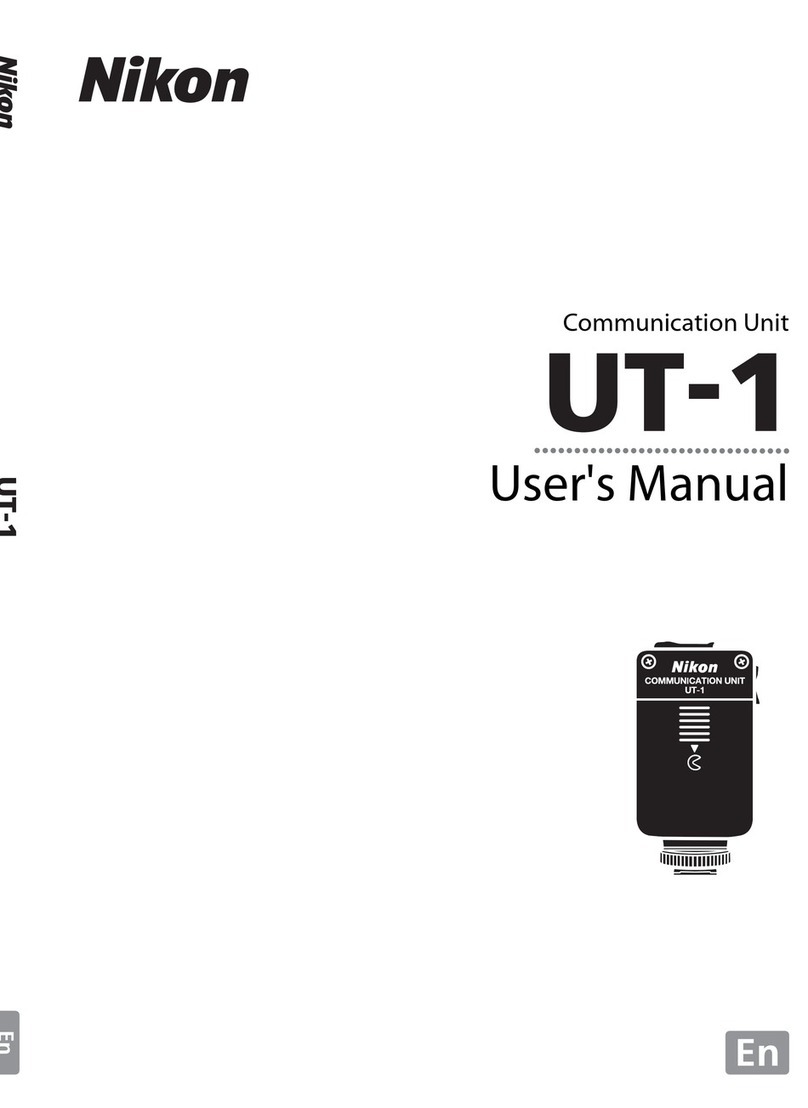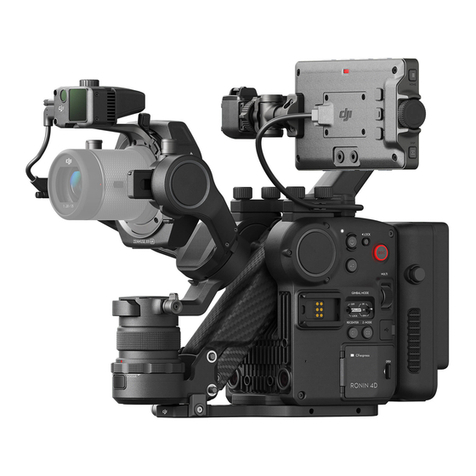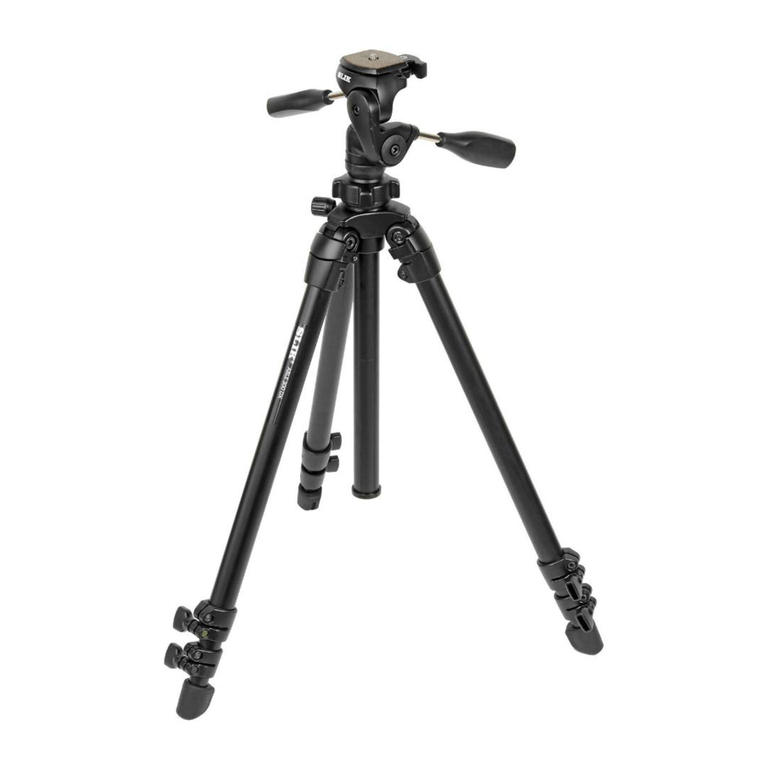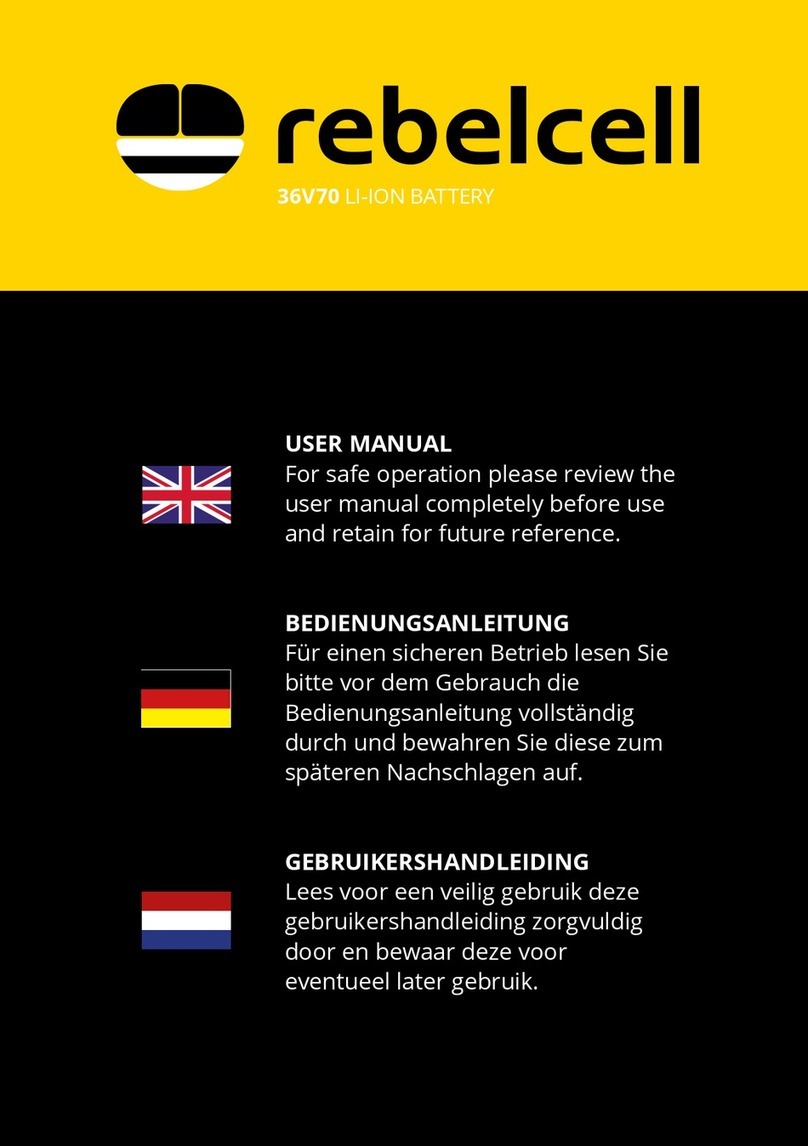
Overview / Usage Notes 3
Overview
The DVF-EL100 is a 0.7-inch color OLED viewfinder.
This unit has the following features.
Built-in OLED panel
The OLED (organic light-emitting diode) panel makes
use of organic material that emits light when an electric
current is applied. The organic material of the panel is
self-emitting, and its luminance level can be controlled by
the amount of electric current applied.
These properties bring about the following three features.
•Quick motion picture response
The luminescent state of the OLED panel can be
changed instantaneously by changing the flow of the
current applied to the organic material. This enables
quick motion picture response and image production
with minimal blurring and ghosting. Furthermore, the
panel’s performance is unaffected by changes in
ambient temperature, allowing shooting in outdoor
locations.
•High contrast and dynamic range
The OLED panel ceases light emission when a black-
level signal is applied, enabling true black display. In
addition, the panel’s high peak brightness and ability to
display brilliant whites in specific portions of the screen
produce dazzling displays of glittering nighttime
illuminations and stars, sparkling jewelry and glass, etc.
•Rich color reproduction
The self-illuminating OLED panel reproduces of a vast
range of colors in virtually any shade or brightness.
High-performance loupe
The 4-group 5-element lens (including aspheric lens)
produces pictures with low distortion while allowing
adjustment over a wide range of visibility.
FOCUS MAG function
You can magnify the height and width of the image (x2)
for easier focus adjustment.
Tally indicator
The viewfinder is equipped with a single tally indicator
(red) that lights in response to a tally signal.
For details on which cameras and camcorders can be
connected to the unit, refer to the operating instructions
for each device.
Usage Notes
Condensation
If the unit is suddenly taken from a cold to a warm
location, or if ambient temperature suddenly rises,
moisture may form on the outer surface of the unit and/or
inside of the unit. This is known as condensation. If
condensation occurs, turn off the unit and wait until the
condensation clears before operating the unit. Operating
the unit while condensation is present may damage the
unit.
OLED panel
The OLED panel fitted to this unit is manufactured with
high precision technology, giving a functioning pixel
ratio of at least 99.99%. Thus a very small proportion of
pixels may be “stuck”, either always off (black), always
on (red, green, or blue), or flashing. In addition, over a
long period of use, because of the physical characteristics
of the organic light-emitting diode, such “stuck” pixels
may appear spontaneously. These problems are not a
malfunction.
OLED display
Due to the characteristics of the material used in the
OLED panel, permanent burn-in or reduction in
brightness may occur.
These problems are not a malfunction.
Viewfinder lens
Do not leave the viewfinder lens facing toward a strong
light source, such as sunlight.
Burnout of the OLED panel or fire may occur if the lens
focuses the sunlight or other strong light source.
Maintenance
Be sure to perform the following maintenance after using
the viewfinder at dusty locations, beaches, hot springs, or
other harsh environments.
• Use an airbrush to carefully remove any dust or sand
from inside the viewfinder.
• Clean the contacts of the connectors.
• After performing the above maintenance, perform a
basic operation test and check that the viewfinder is
functioning properly.
